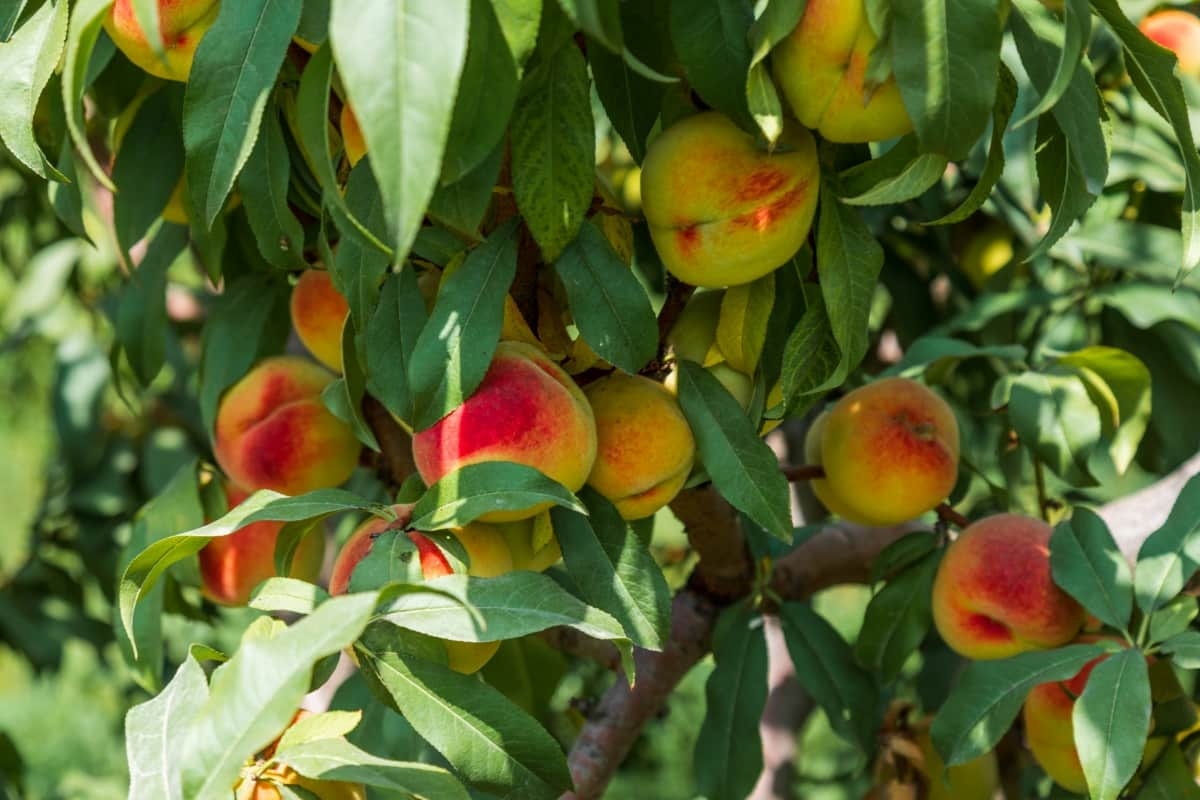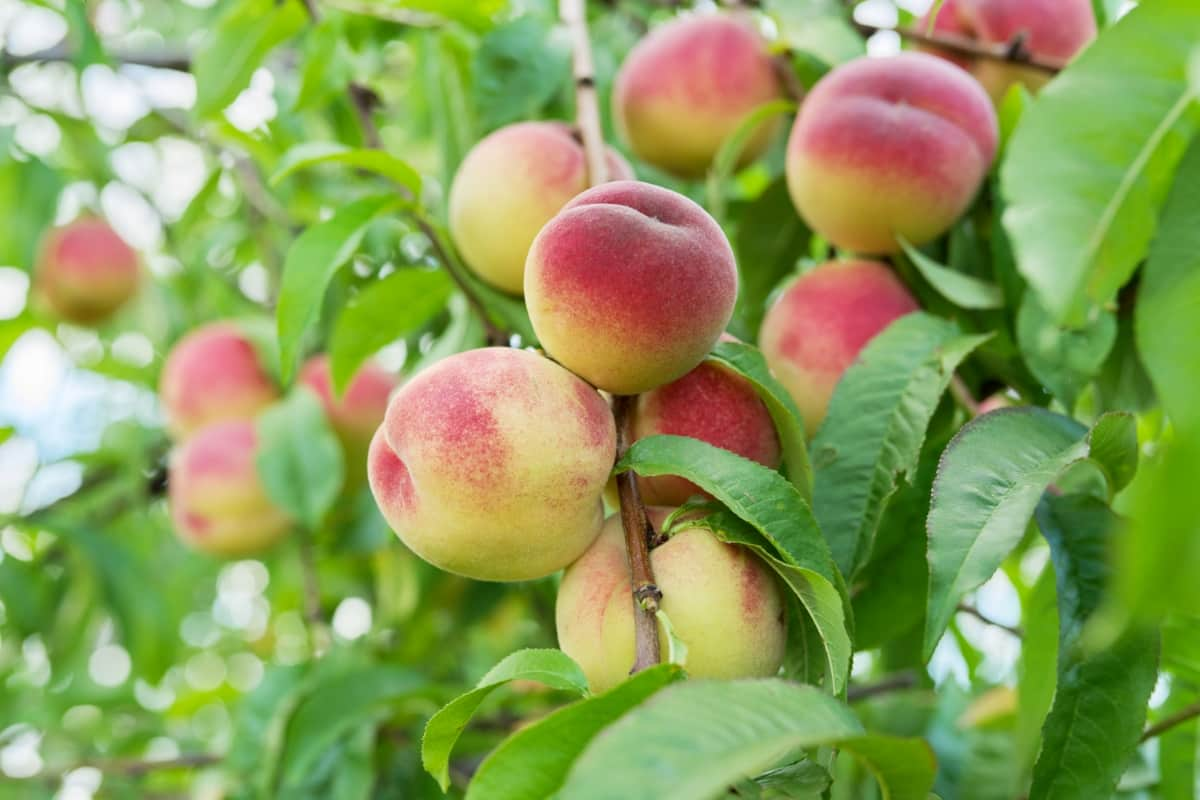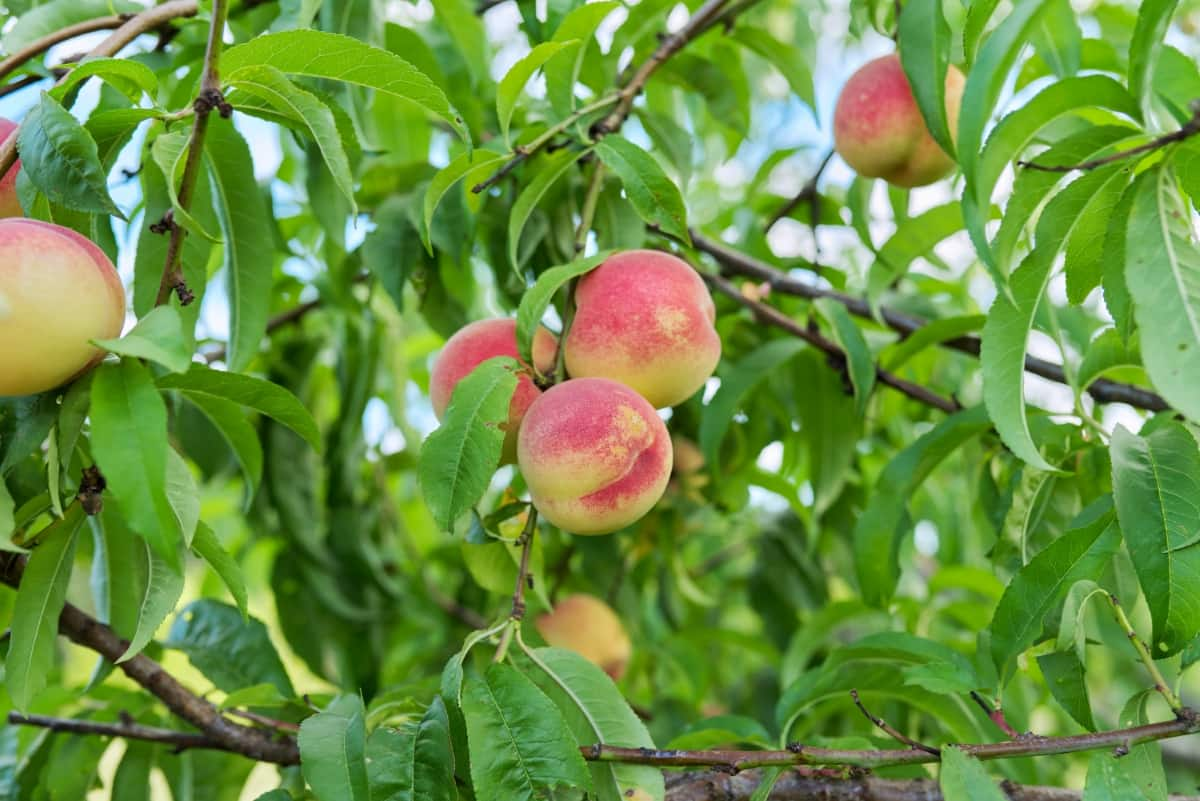Fertilizing potted peach trees is essential for their growth and productivity. Providing the right nutrients properly ensures healthy, vigorous trees that bear abundant fruit. When choosing a fertilizer, opt for a balanced formula with equal amounts of nitrogen (N), phosphorus (P), and potassium (K).

Fertilizer application should be done in early spring, just before the tree starts to bloom. The fertilizer needed depends on the pot’s size and the tree’s age. Remember to water the tree thoroughly after fertilizing to help the nutrients reach the root zone. Regular fertilization will promote strong, fruitful peach trees.
Fertilizing Potted Peach Trees
Best Organic Fertilizers for Peach Trees in Pots: Nurturing Your Plants Naturally
Organic fertilizers are an excellent choice for nurturing peach trees in pots. They provide essential nutrients to the plants naturally, without harmful chemicals. One such organic fertilizer is leaf mold, created by decomposing fallen leaves. Leaf mold enriches the soil by improving its structure and water-holding capacity.
Another effective organic fertilizer is compost, made from organic materials like kitchen and yard waste. Compost enhances soil fertility by releasing nutrients slowly over time. It also improves soil texture and promotes beneficial microbial activity. Using these organic fertilizers, you can ensure the healthy growth and development of your peach trees in pots while also caring for the environment.
Natural Fertilizers for Peachs in Pots: for Environmentally-friendly Options
- Natural fertilizers are a great choice for environmentally friendly peach cultivation in pots. They provide essential nutrients to the plants without causing harm to the environment.
- One such option is compost, made from organic materials like kitchen scraps and yard waste. Compost improves soil fertility, retains moisture, and promotes healthy root development.
- Another option is aged manure, which is rich in nutrients and helps improve soil structure.
- Fish emulsion, derived from fish waste, is also a natural fertilizer suitable for potted peach trees. The plants easily absorb it and promote vigorous growth.
Homemade Fertilizers for Peach Trees in Pots: DIY Solutions for Optimal Plant Health
Homemade fertilizers can be cost-effective and eco-friendly to ensure optimal plant health for peach trees grown in pots. Several DIY solutions can provide the necessary nutrients for these fruit-bearing plants. One such solution is compost tea, which can be made by steeping compost in water for a few days.
In case you missed it: Peach Tree Fertilizer Requirements: Recommendation, Timing, and Frequency of Application

This nutrient-rich liquid can then be applied to the soil around the peach tree. Another option is to use banana peels, which are high in potassium. Simply chop up the peels and bury them in the soil. Epsom salts and water mixture can also provide magnesium, promoting healthy growth.
NPK Ratios and Their Importance in Selecting Fertilizers for Peachs in Pots
NPK ratios are crucial in selecting fertilizers for peaches grown in pots. NPK stands for three macronutrients in fertilizers: nitrogen (N), phosphorus (P), and potassium (K). They are the primary nutrients required by plants. The ratios of these elements determine the fertilizer’s composition and its impact on plant growth.
Peach tree fertilizer 10-10-10: A balanced NPK ratio like 10-10-10 or 14-14-14 is ideal for peach trees. This ensures the plant receives equal amounts of nitrogen for leaf growth, phosphorus for root development, and potassium for overall plant health. Understanding NPK ratios is essential to choosing the right fertilizer and providing optimal nutrition to potted peach trees.
Slow-Release Fertilizers: Enhancing Nutrient Availability for Peachs in Pots
Slow-release fertilizers are a valuable tool for enhancing nutrient availability for peaches grown in pots. Unlike traditional fertilizers, which release nutrients rapidly, These fertilizers provide a continuous supply of nutrients over an extended period. This helps to prevent nutrient deficiencies and ensures that the peach trees receive a consistent supply of essential elements.
Slow-release fertilizers are typically formulated with a coating that controls the release of nutrients, allowing them to break down and be absorbed by the plant roots gradually. This slow-release mechanism reduces the risk of over-fertilization and minimizes nutrient leaching, making it an environmentally friendly option for pot-grown peaches.
Peach tree fertilizer spikes: These spikes slowly release nutrients into the soil, promoting healthy growth and abundant fruit production. They are easy to use and ensure that your peach trees receive the proper nourishment they need.
pH Levels and Fertilizer Selection for Peachs in Pots: For Balanced Soil Environment
Peach trees cultivated in pots require a balanced soil environment to thrive. One crucial factor to consider is soil pH. The ideal pH range for peach trees is between 6.0 and 6.5. This slightly acidic environment ensures optimal nutrient availability and efficient absorption. To achieve this balance, select the right fertilizer. A fertilizer with equal ratios of nitrogen, phosphorus, and potassium is recommended. Incorporating organic matter into the soil can also help maintain pH levels and improve soil quality. Regular monitoring pH levels and appropriate fertilizer selection will promote healthy growth and fruitful harvests for peach trees in pots.
The Importance of Timing: When to Fertilize Peach Trees in Pots
Applying fertilizer in early spring is recommended, just before new growth appears. This allows the plants to receive the necessary nutrients as they grow actively. Avoid applying fertilizer during the dormant winter period, as it may not be absorbed properly. Additionally, it is important to avoid late-season fertilization, as it can stimulate new growth that may not have enough time to harden off before winter.
In case you missed it: Peach Yields Per Hectare, Harvesting, and Storing of Peaches

How to Apply Fertilizer to Peachs in Pots: Techniques for Maximum Effectiveness
Start by selecting a slow-release fertilizer specifically formulated for fruit trees. Before applying, water the peach tree thoroughly to ensure the soil is moist. Next, scatter the fertilizer evenly around the tree’s base, avoiding direct contact with the trunk. Use a rake or garden fork to incorporate the fertilizer into the top layer of soil gently. Afterward, water the tree again to help activate the fertilizer. Repeat this process every 4-6 weeks during the growing season, adjusting the amount of fertilizer based on the tree’s size and health.
Water-Soluble Fertilizers for Potted Peach Trees
Water-soluble fertilizers are an effective and convenient way to provide essential nutrients to potted peach trees. These fertilizers dissolve easily in water, allowing for quick and efficient absorption by the plant’s roots. They are especially beneficial for potted peach trees as they ensure that the nutrients are readily available to the tree, promoting healthy growth and fruit production. Some popular water-soluble fertilizers for potted peach trees include Jack’s Classic Blossom Booster, Miracle-Gro Water Soluble All Purpose Plant Food, and Jobe’s Organics Water Soluble Fruit & Citrus Fertilizer.
Best Fertilizer Application Techniques for Peachs in Pots: Dos and Don’ts
Dos
- Use a balanced fertilizer with equal ratios of nitrogen, phosphorus, and potassium.
- Apply fertilizer in early spring to promote healthy growth.
- Water the peach tree thoroughly before applying fertilizer to prevent root burn.
- Spread the fertilizer evenly around the tree’s base, avoiding direct contact with the trunk.
- Incorporate slow-release fertilizers for extended nutrient availability.
- Monitor the soil pH regularly and adjust it to maintain optimal nutrient uptake.
Don’ts
- Avoid over-fertilization, leading to excessive vegetative growth and reduced fruit production.
- Do not apply fertilizer during the dormant period, as the tree’s nutrient requirements are low.
- Avoid using high-nitrogen fertilizers, which promote excessive leaf growth instead of fruit development.
- Avoid placing fertilizers close to the trunk, leading to root damage.
- Do not overlook the importance of regular watering, as it helps in proper nutrient absorption.
In case you missed it: 9 Causes of Dying Peach Trees and How to Fix Them?

Conclusion
In conclusion, fertilizing potted peach trees using organic and natural options benefits their overall health and productivity. Homemade fertilizers can be a cost-effective and sustainable choice. Understanding the NPK ratio and applying fertilizers at the right time and correctly will help ensure optimal growth and a successful harvest of delicious peaches.
- Feed Your Flock for Less: Top 10 Tips to Save on Chicken Feed
- Ultimate Guide to Ossabaw Island Hog: Breeding, Raising, Diet, and Care
- Hatching Answers: The Top 10 Reasons Your Chickens Aren’t Laying Eggs
- Eggs and Economics: Breaking Down the Cost of Raising Backyard Chickens
- Defend Your Greens: Proven Methods to Keep Iguanas Out of Your Garden
- Ultimate Guide to Cinnamon Queen Chicken: A Comprehensive Guide for Beginners
- Ultimate Guide to California Tan Chicken: Breeding, Raising, Diet, Egg-Production and Care
- Ultimate Guide to Marsh Daisy Chicken: Breeding, Raising, Diet, and Care
- 10 Types of Chicken Farming Businesses You Can Start for Profits